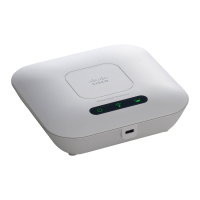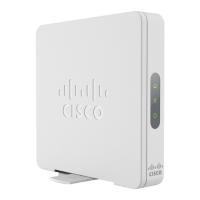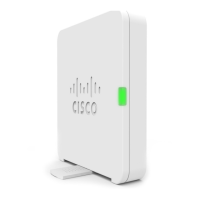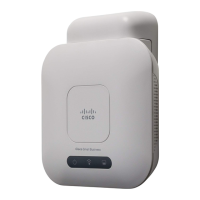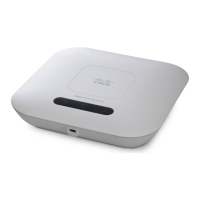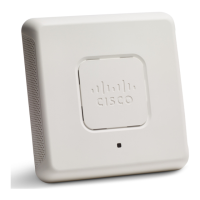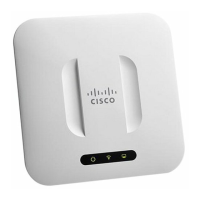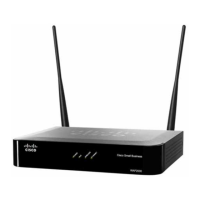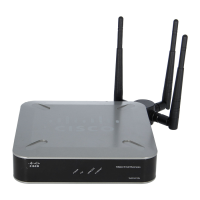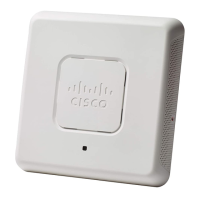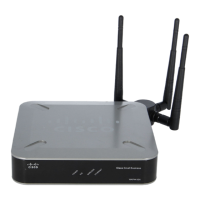• Filter on Client — Specifies the MAC address for WLAN client filter. Note that the Client filter is active only when
a capture is performed on an 802.11 interface.
• Filter on SSID — Select a SSID name for packet capture.
Step 6 Click Apply. The changes are saved to the Startup Configuration.
Step 7 Click Start Capture and then click Refresh to obtain the Packet Capture Status which contains of the following data:
a) Current Capture Status
b) Packet Capture Time
c) Packet Capture File Size
In Packet File Capture mode, the WAP device stores the captured packets in the RAM file system. Upon activation, the
packet capture proceeds until one of these events occurs:
• The capture time reaches the configured duration.
• The capture file reaches its maximum size.
• The administrator stops the capture.
Remote Packet Capture
The Remote Packet Capture feature enables you to specify a remote port as the destination port for packet
captures. This feature works in conjunction with the Wireshark network analyzer tool for Windows. A packet
capture server runs on the WAP device and sends the captured packets through a TCP connection to the
Wireshark tool. Wireshark is an open source tool and is available for free; it can be downloaded from
https://www.wireshark.org/.
A Microsoft Windows computer running the Wireshark tool allows you to display, log, and analyze the
captured traffic. The remote packet capture facility is a standard feature of the Wireshark tool for Windows.
While the remote packet capture is not supported by the Linux, the Wiresharktool works under Linux and
already created capture files can be viewed.
Note
When the remote capture mode is in use, the WAP device does not store any captured data locally in its file
system.
If a firewall is installed between the Wireshark computer and the WAP device, the Wireshark must be allowed
to pass through the firewall policy of the computer. The firewall must also be configured to allow the Wireshark
computer to initiate a TCP connection to the WAP device.
Stream to a Remote Host
To initiate a remote capture on a WAP device using Stream to a Remote Host option:
Step 1 Select Troubleshoot > Packet Capture.
Step 2 For the Packet Capture Method, click Stream to a Remote Host radio button.
Cisco WAP150 Wireless-AC/N Dual Radio Access Point with PoE / Cisco WAP361 Wireless-AC/N Dual Radio Wall Plate Access Point with PoE
117
Troubleshoot
Remote Packet Capture
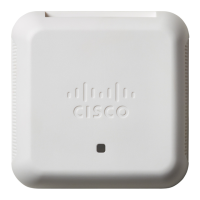
